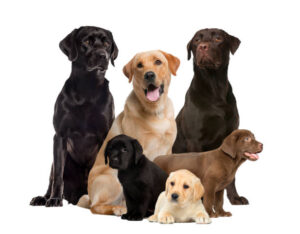In this article, we discuss the Labrador Retriever colors. All breeds have their color so let us know about the labrador retriever color.
- Labrador Retrievers come in three primary colors: black, chocolate, and yellow.
- These colors can vary in shade, from light to dark. Additionally, some Labradors may have variations in their coat color, such as brindle or silver.
- However, these variations are less common and not officially recognized by kennel clubs for breed standard purposes.
For more information, you can no more about labrador retriever color in detail.
Labrador Retriever Colors: A Comprehensive Guide
The colors of Labrador Retrievers are important for knowing the genetics and characteristics of the breed, in addition to being purely attractive.
We explore the history, characteristics, and common misconceptions surrounding the many colors of Labrador Retrievers in this comprehensive guide.

Understanding Labrador Retriever Colors
Black Labrador Retrievers
Black Labrador Retrievers have sleek, shiny coats that have a deep, pure black color. Although they are primarily selected for hunting, they also make excellent non-working pets.
Among all the Labrador color varieties, black labs are statistically the most common. This is because this breed inherits its coat color in a certain way.
Nine distinct gene combinations could result in unique coat colors without going too far into a scientific reason. Only two of these result in a chocolate coat, three in yellow, and four in black. By coincidence, about half of all Labradors are black labs.
There is no evidence to support the claim made by some that black labs are the most affectionate and calm of all Labrador breeds.

Yellow Labrador Retrievers.
Yellow Labrador Retrievers can display a vast array of colors, with two other Labrador colors we will later delve into being simply the extreme ends of the Yellow Lab color range. Yellow Labrador Retrievers frequently have a coat that is a light shade of brown or tan, giving off a yellowish hue.
They are seen as the most friendly among the Labs, but once again, there is no research to back this up.

Chocolate Labrador Retrievers
Chocolate Labrador Retrievers are the rarest of the three major Labrador colors, with a deep brown, chocolate-colored coat. They are the most energetic and hardest to train and are not used as service dogs by leading dog training organizations.
Their absence from service dog institutions may be due to higher energy levels and shorter lifespans than Black and Yellow Labs. Chocolate Labs experience more health problems and have shorter lifespans on average, living about a year and a half shorter than other colored Labs.

White Labrador Retrievers
A sociable, intelligent, and versatile breed, the White Labrador Retriever is a variation of the Labrador Retriever. Major kennel groups such as the American Kennel Club do not recognize Labs, but some have a pale yellow coat that is called “ivory” or “cream.”
These dogs are similar to other Labradors in that they are friendly, trainable, and good for homes, workplaces, or services. Intelligent breeders value temperament and health more than coat color.

Red Labrador Retrievers
Red Labrador Retrievers—also known as Red Fox Labs—have a deep red coat that is symbolic of a fox. These dogs reflect the extremes of the Yellow Lab’s color spectrum rather than a unique genetic color. In short, they look reddish-brown and have the genetic makeup of a yellow lab.
Their lifespans and health issues are the same as those of a yellow or black lab, and they don’t have any extra health issues because their genes are the same as those of their yellow siblings.
For reasons such as the fact that a light brown or yellowish coat is more common than a deeper red color, red labs are often more uncommon than yellow labs.

Silver Labrador Retrievers
Silver Labrador Retrievers are elegant, majestic, and beautiful. Their appearance is both stunning and cute, with their light gray coat shining brightly in the sun.
Given that they share genetics with one of the main three Lab colors, these pups are comparable to Red Labs. Although they may appear more like Blue Labs, Silver Labs are Chocolate Labs with a lighter or more diluted coat, giving them a silvery aspect.
Sadly, Silver Labs acquire a few more health problems from their chocolate siblings and often live shorter lifetimes than Black and Yellow Labradors. Additionally, they have a hereditary disease called “color dilution alopecia,” which can cause patchy fur and skin issues.

Is It Possible To Predict Labrador Puppy Colors?
Because the exact color of a Labrador puppy depends on its parents’ genetic heritage, it can be challenging to predict. Breeders can, however, make educated predictions based on the genetic makeup and color of the parents.
In general, the likelihood that their puppies will inherit a certain color is higher if both parents have the gene for that color. However, because genetics can be complex, it’s not guaranteed.
The behavior of Labrador Retrievers isn’t typically linked to their coat color. Whether a Lab is black, yellow, or chocolate, their temperament and personality traits tend to be consistent.
However, individual differences in behavior can occur due to factors like genetics, socialization, training, and environment. So, while coat color doesn’t directly influence behavior, each Lab can have its unique personality regardless of color.
Conclusion
In conclusion, there are a variety of colors available for Labrador Retrievers, including black, chocolate, yellow, white, red, and silver.
Chocolate labs are the rarest, with black labs being the most prevalent, followed by yellow labs. Red labs reflect intense colors of yellow, and white labs may have a pale yellow coat.
Silver labs are similar to blue labs in that they have a striking light gray coat. Due to genetics, predicting a Labrador puppy’s color can be difficult. But a Labrador’s behavior is usually influenced by other factors, such as environment, training, and heredity, not by the color of their coat.
FAQs
Are certain Labrador Retriever colors more prone to health issues?
No, there is no scientific evidence to suggest that any particular color of Labrador Retriever is more prone to health issues. Responsible breeding practices prioritize health and temperament over color.
Do Labrador Retriever colors affect their behavior or temperament?
No, Labrador Retriever colors do not affect their behavior or temperament. Regardless of color, Labradors are known for their friendly, outgoing nature and make excellent family pets and working dogs.
Are there rare Labrador Retriever colors?
While black, yellow, and chocolate are the most common colors for Labrador Retrievers, there are also variations such as silver, charcoal, and fox red that some consider rare or unique.
Can two Labrador Retrievers of different colors produce puppies of any color?
Yes, Labrador Retrievers of different colors can produce puppies of any color variation, depending on the combination of genes inherited from each parent.
Do show-quality Labrador Retrievers need to adhere to specific color standards?
Yes, in conformation dog shows, Labrador Retrievers are judged according to breed standards, which may include specific color requirements. However, color should not take precedence over health and temperament considerations.

Pingback: Labrador Retriever Epistasis - Labrador Pro